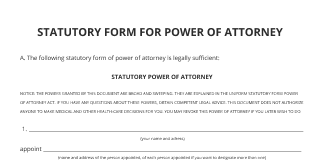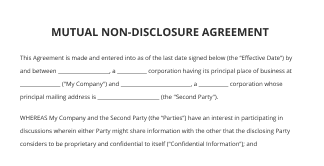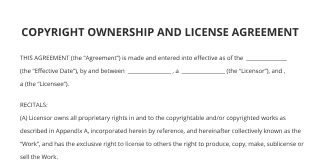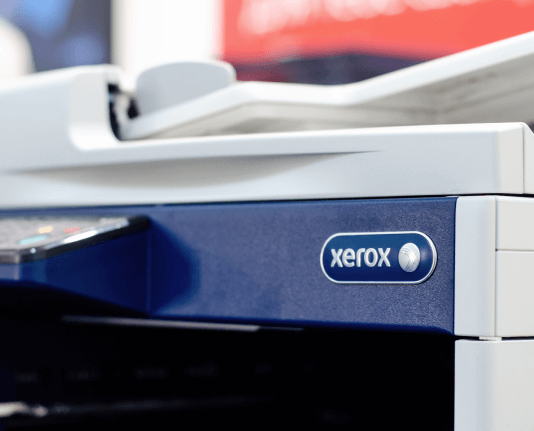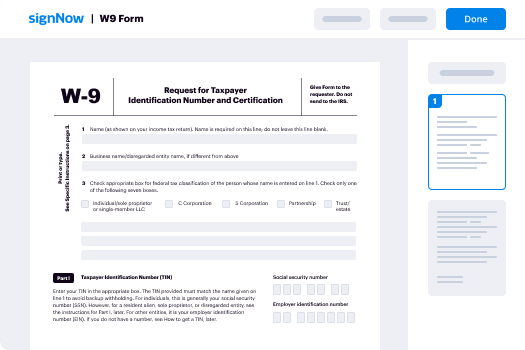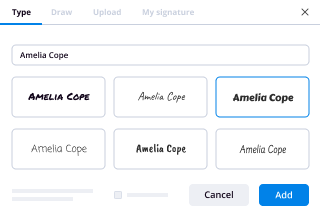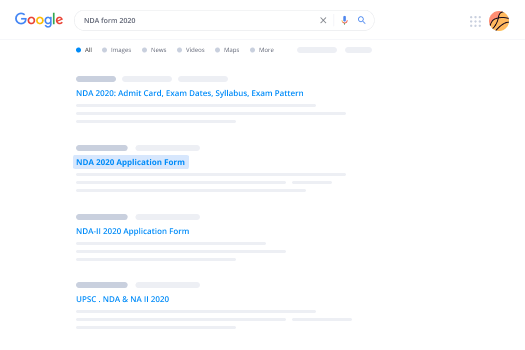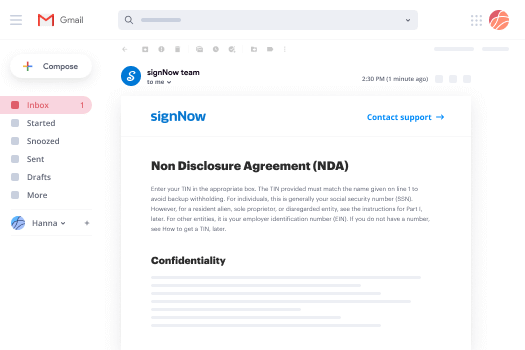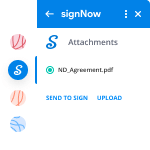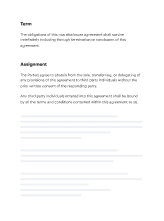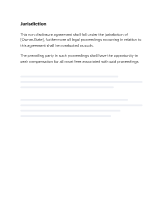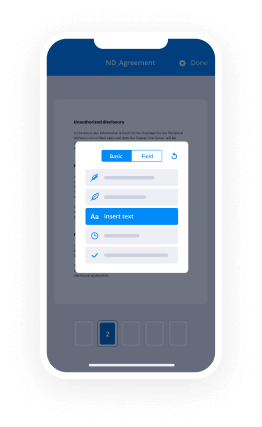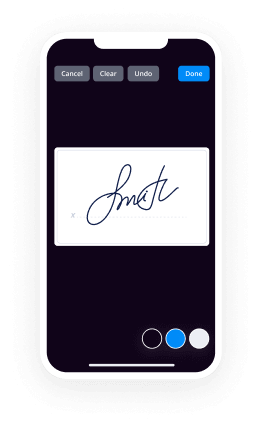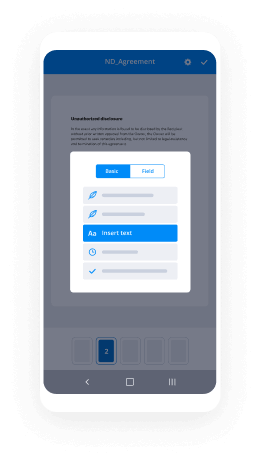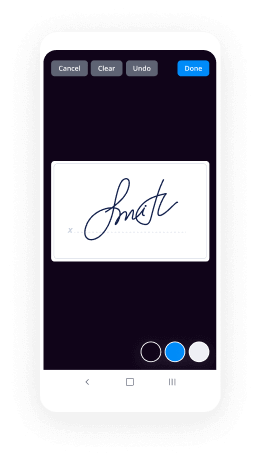Mark Painting Quote Template Made Easy
Do more online with a globally-trusted eSignature platform
Standout signing experience
Robust reporting and analytics
Mobile eSigning in person and remotely
Industry rules and conformity
Mark painting quote template, faster than ever before
Handy eSignature add-ons
See airSlate SignNow eSignatures in action
airSlate SignNow solutions for better efficiency
Our user reviews speak for themselves






Why choose airSlate SignNow
-
Free 7-day trial. Choose the plan you need and try it risk-free.
-
Honest pricing for full-featured plans. airSlate SignNow offers subscription plans with no overages or hidden fees at renewal.
-
Enterprise-grade security. airSlate SignNow helps you comply with global security standards.

Your step-by-step guide — painting quote template
Adopting airSlate SignNow’s eSignature any organization can accelerate signature workflows and sign online in real-time, supplying an improved experience to consumers and staff members. Use exterior painting estimate template in a few simple steps. Our mobile apps make work on the go achievable, even while offline! eSign contracts from any place worldwide and close deals in no time.
How to fill out and sign a painting estimate template
- Log in to your airSlate SignNow profile.
- Find your document in your folders or import a new one.
- Access the template and edit content using the Tools menu.
- Place fillable boxes, type textual content and sign it.
- Include numerous signers using their emails configure the signing sequence.
- Choose which users can get an completed doc.
- Use Advanced Options to limit access to the document add an expiry date.
- Click on Save and Close when completed.
In addition, there are more innovative functions open for painting estimate template. List users to your collaborative work enviroment, view teams, and monitor collaboration. Millions of users across the US and Europe concur that a solution that brings everything together in a single cohesive digital location, is what enterprises need to keep workflows functioning smoothly. The airSlate SignNow REST API enables you to integrate eSignatures into your application, internet site, CRM or cloud storage. Try out airSlate SignNow and enjoy quicker, easier and overall more productive eSignature workflows!
How it works
airSlate SignNow features that users love
See exceptional results painting and decorating quote template
Get legally-binding signatures now!
FAQs mark painting quote template
-
How do you write quotes in a painting?
Suggested clip How To Write A Painting Proposal? - YouTubeYouTubeStart of suggested clipEnd of suggested clip How To Write A Painting Proposal? - YouTube -
How do you price a painting?
Pay yourself a reasonable hourly wage, add the cost of materials and make that your asking price. For example, if materials cost $50, you take 20 hours to make the art, and you pay yourself $20 an hour to make it, then you price the art at $450 ($20 X 20 hours + $50 cost of materials). -
How do you cite a museum of art?
To cite materials posted at a museum, use the following style: Format of information (wall text, object label, brochure), Gallery Name, Number or Exhibition Title, Museum Name, City, State. example: Wall text, Playful Performers, National Museum of African Art, Washington, D.C. -
How do you write a professional quote?
Quotation header \u2014 Mention your company's name, contacts, tax registration number, quotation number and date, payment terms, and the name of the recipient. You should write the word \u201cQuote\u201d or \u201cQuotation\u201d at the top of the page. Quotation body \u2014 Describe the proposed goods or services and provide pricing information. -
Are titles italicized?
Titles of full works like books or newssignNows should be italicized. Titles of short works like poems, articles, short stories, or chapters should be put in quotation marks. Titles of books that form a larger body of work may be put in quotation marks if the name of the book series is italicized. -
How do you create a quote?
The first option is to click the Create Related drop-down button and select the Quote option. Alternatively, under the Quotes section in the left column, and click the Add a Quote button. Fill out your Quote Details: Give your Quote a Title, Quote Manager, and Quote Template. Click Create Quote. -
How do you appreciate an artist?
Learn a Little Bit Every Day. Learn about art, a little bit a day. ... Try an Art Project. Try doing a project. ... Take a Class. Try going to a paint night or class. ... Write What You Know. ... Visit a Museum. ... See Through Different Angles. ... Analyze One Thing. ... Think About Your Feelings. -
What is the cost of commercial painting?
An average painter should cover between 150 and 200 square feet an hour. A professional commercial painting contractor may charge between $50-$100 per hour for painting services. For a 1000 square foot project priced at 75 dollars per hour, this comes out to about 500 dollars. -
How do you estimate a painting?
Suggested clip How To Write A Painting Proposal? - YouTubeYouTubeStart of suggested clipEnd of suggested clip How To Write A Painting Proposal? - YouTube -
What is the average price per square foot for painting?
The average cost to paint the interior of a house falls between $1.50 and $3.50 per square foot. If you're doing the ceilings, walls and trim, the cost per square foot will likely fall between $3 and $4. If there is damage to the walls that needs to be repaired before painting can proceed, you'll pay extra. -
How do you quote a commercial painting job?
To get a rough estimate for a commercial painting project, you need to add the costs for materials and labor. In our case, the project will cost between $995 ($140+$855) and $1,155 ($300+$855). For a more accurate estimate, you should also include overhead costs (power-washer rental, fuel, insurance, etc.) -
How do painters calculate square footage?
Multiply the length of every room in the house by its width to determine its square footage. Multiply the width by the height of each exterior wall to find exterior square footage. Add the totals to find square footage for the entire house. -
How long should it take to paint a 12x12 room?
Typically it should take the average person roughly 40 minutes to roll out each coat the paint in an average room. -
How do you estimate labor for painting?
Multiply the time by the cost of labor \u201cAsk yourself how much money you want to make,\u201d Graham says. For example, you might just want to make $30 an hour. So, if you have a full 8-hour day, you would be making $240 to paint a living room and a bedroom before the cost of materials. -
How many sq ft does a 5 gallon bucket of paint cover?
Paint Coverage Area And, how much area does a five gallon bucket of paint cover? Check the paint container to determine the estimated coverage. Generally, a quart of paint covers about 100 square feet, and a gallon of paint covers 400 square feet.
What active users are saying — painting quote template
Related searches to painting estimate template
Initial painting quote template
hey guys it's Brandon Lewis today we are going to talk about three steps to calculating an accurate estimate okay there's so much to selling painting services that has nothing to do with the price that you come up with but a large part of it does and today I'm going to specifically address this and a longer a video than I would typically do and I've even brought some notes because I want to make sure that you understand exactly what you need to do I'm gonna ask you to bear with me because I've got a cold of some sort but I'm pushing through to make sure that the painters weekly goes out this week so I appreciate your patience and your indulgence so when you can't calculate an estimate accurately it creates all kinds of problems if you just show up and guess well I guess the number of days I kind of know what it's gonna be I guess the hours I calculate though I take measurements than I guess whatever type of guessing you were doing even if it is an educated guess is still a guess okay and we'll talk about that as we go through here when you guess your estimates and you do not calculate them using this three-step process you will lose money on some jobs you will make money on some jobs it will be remarkably hard to hold your painters accountable and I will tell you this guessing does not scale does not scale so if you hire an estimator and you've always guessed and now you're gonna teach him to guess good luck and that does not work out I've never seen it work out and it it puts the blame all over the place because it I guess just ends up in a bad situation so the first thing before we get into the technical aspects that I want you to come to grips with are a few fundamental key concepts about what you really do for a living okay what you can do and what you can't do so let's talk about what you really do for a living you for a living and you can write this down if you're taking notes you buy labor wholesale from your painters in bulk and you sell it retail job by job to the end-user it could be the client it could be a general contractor it could be a commercial client home owner doesn't matter you buy labor in bulk wholesale you sell it retail to the end-user excuse me mm-hmm so what this means is that you're really in the business of buying and selling labor okay yeah you may paint you may be a painter but you're in the business of buying and selling labor if you have other people that work for you and in fact even if you just work by yourself so if somebody bought hats for a living and they sold hats for a living they would know exactly what they paid for the Hat they know how many hats they had and they'd know how many hats they sold they'd never say well I kind of guess how many hats I got and I kind of guess how many hats they bought and I'm pretty good at guessing the number of hats I just look at the tractor-trailer I look at the Box I can kind of guess how many hats are in there you would look at that person like they were crazy because you know you're supposed to count things right that's what you're in the business of doing let me tell you what you can't do if I gave you a 10-foot long board and I sent you into your backyard with a skill saw without a tape measure and I asked you to guess a ten foot board to be exactly six feet and to do that five times in a row and then bring it to me so I could build a stud wall that's shorter you couldn't do it you might be two or three inches off you might be a half-inch off and then as you cut the boards they're all going to be off and if you can't guess something that simple a simple measurement in your back yard you cannot guess how long it takes to paint a house or a commercial project because it is a series of complicated guesses all stitched together and if their basis is incorrect it's not going to work out for you okay I've tested this over and over again I've brought seasoned painters into a room owners had them guests have the next person guests had the third person guess all three guesses would be different I've also taken those same owners put them in rooms that are identical from a dimension standpoint but that look and feel different and I get different numbers then from these educated guesses we've been guessing for 20 years you probably feel like your guess is better than the next painter I'm here to tell you it probably isn't not only is it probably not better than the next painter is probably not better as you go from project to project it's all over the place so guessing doesn't work doesn't scale causes you to lose money makes you feel uncertain one other thing that guessing an estimate no matter how you guess if you don't use this process does is it makes you nervous about presenting an estimate and it keeps you from doing it on the spot meaning you're gonna email this thing in later which is the worst way to try to close a very expensive transaction which most painting transactions are several thousand dollars on average three thousand dollars so this guessing stuff just cost you all kinds of money now another thing you should never ever do before we get into this process is to take someone else's price how much would you charge for this if you don't know what they've come up with in these three steps you don't take their price and in fact the only thing you really want to know from them is what this is and we'll get into what this is in a second also square footage prices are crazy because they have all three things involved most people don't know how any of these three things were calculated by the person that they come from and unless you are painting the floor a square footage price is pointless why would you measure the floor and then paint the walls in the ceiling in the windows and the doors floor has nothing to do with the other services that you're painting it's it illogical so we're going to talk about how to do this going through a three step process it's real simple and the first metric on this chart if you're writing this down is the production rate a production rate is how long it takes someone to paint a discrete item or how many square footage of a certain surface or linear foot of a certain surface a painter can paint per hour now why does this matter think about it when you pick up a can of paint it says something like depending on what you're painting 300 square feet average coverage why do they put that on a can of paint because a pan of a ton of paint is finite in how far it will go an hour of a painters tongue is finite into how much he can paint so on the side of every can of paint excuse me there is a there's a coverage rate well on the side of every painter there is a coverage rate for particular surfaces he can only cut in so far you can only paint so many linear feet of trim you can only paint so many square foot of walls so you need to know because you buy and sell labor for a living you need to know how far that labor goes just like you have to know how far your paint goes once you calculate your production rates they stay constant pretty much forever once you feel comfortable with them they don't change the production rate is the bedrock for all of your calculations okay we'll get into the other two metrics in a minute but this production rate is the bedrock so first things first production rate what does that mean say for example you determine that a painter can paint 100 square feet an hour brushing and rolling in most residential environments that are occupied okay not new construction grandma's bedroom a living room whatever it is how do you come up with a production rate well there are two ways both of them are real simple and I prefer if you're writing this down that you use a product generate diary and a production rate diary is just where you show up you get the job set up you take a measuring tape and you figure out that okay in this room there's 1200 square foot of walls I'm starting at 8 o'clock in the morning I'm gonna start brushing I'm gonna start rolling not in a hurry but not dragging my feet because that's what your employees will do and I'm gonna see how far I get I'm gonna start the clock I'm going to end the clock and I'm gonna see how far I get and let's say in 10 hours you get all 1,200 square feet painting well that means that really it's 1,200 square feet per hour you repeat that same exercise for that particular surface walls three or four times and you start coming up with averages and after a while you'll start seeing that your numbers go back and forth but you'll see an average maybe it's 112 maybe it's 98 whatever it is for you you do the same thing with linear foot of trim okay what's the perimeter of trim in this area set your clock paint it see how long it took set your clock in the next room paint it see how long it took same thing with doors set a clock see how long the door in a frame takes set a clock see how long the next one takes and after maybe a week you will have the production rates and some sort of really good real world average for every surface that you paint now most painters if you've tuned out tune back in or two freakin lazy to do this for one period in their life too lazy they would rather be wrong for 20 years than to think real hard for 20 minutes or two or three days and get these rates chronicled if this is you you can't be helped you're never going to find a good way to come up with an accurate estimate this is the only way they're driven by production rates now you can buy production rates industry organizations sometimes production rates are preloaded into estimate software but I have found that owners quote with confidence when they determine these rates in the field and figure out if they're accurate or not it's just it's really weird to go out and quote stuff if you don't know if the rates are accurate for you or your painters now if you don't paint what mean for example I own a big painting company never paint it if this is the case then you have to get with your lead painter explain the process give him a production rate diary log real simple you can do it in a Word document and then you all get together and meet and then maybe he gives a couple to the crew members and you figure out what this is going to be and you explain to them you can't go too fast you can't go too slow because this is going to be the measuring stick if you go too fast I'm gonna hold you accountable on every estimate we're gonna go over a budget if you go too slow we're gonna lose work because we'll be overpriced so why do you do this it's because a gallon of paint only goes so far a painters labor hour only goes so far you need to know how far it goes and your job when you go to do an estimate it's really not to estimate at all your job is to measure the surfaces with a simple tip sheet to plug it into an estimating program or plug it into an excel sheet and just do the division or the multiplication and see how does this come out how many labor hours so at the end of a job say for example you look at a three-bedroom project and you look at all of it you do your division your multiplication your addition and it's 37 hours 37 hours maybe there's 12 hours in walls 12 hours and ceiling and the remainders and trim so you know how much labor is required on each surface and in each room production rates they are the foundation the cornerstone you don't need to know anything about two and three if you never calculate production rates at number one Hey number one production rates if you don't have production rates you are not a business owner you're just guessing you're a trades person who's guessing this is not how you run scalable companies that make money production rates okay so once you determine your production rates and how long it takes to paint a project and you get really to where your job is just to show up and measure one minute before I move on people are gonna say about this video well every job is different everything is different what if you're painting Doda Doda this is what's gonna come every job does have some weird things to it say for example if you come up with production rates for the exterior of a home and then there's a home that requires a ton of scraping and priming and you're gonna have to guess that a little bit okay that's fine but here's the thing there's no need to guess the entire project when the prep is the only thing that is a wild card when the prep is the only thing that's a wild card you know with a production rate that once the the house is prepped that the siding is going to be painted at the same rate soffits and fascia are gonna be painted at the same linear foot rate windows are gonna be painted at the same rate of a number of depending on the type so then you come down to maybe scraping priming glazing carpentry well it's better to have 85 percent of every project to be fixed not a guess than it is to go well I can't figure out 85 percent of it oh I can't figure out 15 percent of it so I'm gonna guess the whole thing and risk being really wrong so it's about reducing the margin it's not about you're never going to run into a unique situation and say for example what if it's the first time you've ever painted exposed ceilings in a commercial situation well you may have to guess you may have to ask around but then guess what you start the clock you set your production rate diary you figure it out now you've got a log of that particular surface and situation so the next time you see that in your painting you're not surprised you've got evidence field tested evidence of what your production rate is so for all you people that are too lazy to do this you just want to guess don't post don't comment don't cry just put I'm sorry I'm too lazy to do this I would rather suffer for eternity than to do some hard thinking and some math for a short period of time okay so that's the whole deal with production rates so never ask some show somebody a picture of a house and go what would you charge ask them what are your production rates for the various surfaces on this house that would actually be helpful then figure out how they calculated them because number two and number three is going to be different for you it's never gonna be the same for every painter so asking for a price when it really has three things in it and only the only thing you can really get that's helpful from somebody's the production rate okay so number two is your pay rate this is what you pay a painter per hour average hour okay what you pay a painter per hour the pay rate now there are different components to the pay rate most companies they're really three big ones most companies only have one component okay and that is we pay you a flat hourly rate doesn't matter how fast you paint doesn't matter how slow you paint unless you really suck and we fire you if you're excellent and we're not gonna pay you any more and that's it okay there's just an hourly flat pay rate period for sophisticated companies you're gonna have a pay rate but you're also gonna maybe employ something like a saved labor Bonus Program where you pay your painters based upon the percentage of labor hours they save on every job so that everybody's speaking this common language of labor hours okay labor hours your pay rate the so there's the bowerly rate a bonus structure which if you pay with a saved labor bonus structure you're really paying bonuses out of labor that was never billed to the client or that was rather never used by your company but billed to the client so it's a free way to incentivize your painters save labor Bonus Program it's a free way we're just paying them out of hours that were charged the client but never actually consumed and then the third one is this and this is a hard one it's everything you do to make sure that painters want to stay at your company personal gratitude group recognition private recognition contests walls of fame company outings benefits whatever it is that you do that makes painters want to stay and work for you when they really want to leave most other painters so let's say in this example we run all of our numbers for our production rates we get number one it's a hundred hours and let's say our average pay rate all in with taxes etc benefits commission is twenty bucks an hour well that's two thousand dollars in labor right one hundred hours twenty dollars an hour two thousand dollars in labor that's what it's going to cost the company labor just to do the job not materials just the cost of the labor now here's the beauty when you measure surfaces to get your pay rate or how much Labor's in a job you can also do the materials exactly because you're not guessing anymore you just apply the production or the coverage rate of the paint to the same services that you used for the production rate to get the pay rate and that's a good thing so two thousand dollars in labor now we're down to the charge rate what we charge the client most people think no most people are just guessing all over the place so they don't even know what their charge rate is they don't know what they typically get they got no idea most painters only really know what they pay their painters or most owners rather only really know the only number they knows what they paid their painters they don't know the production rate they don't know why or how they should have a charge rate charge rate is what you pay the end user or rather what you charge the end user so if it's 20 here maybe you charge the end-user 55 dollars an hour now the charge rate is based upon three things the first two you're not going to expect and that's fine the last one you're gonna think this the only thing that matters and it matters very little so the first thing is this the ability for the market to support your charge rate is based on three things first thing is your relationship with the client the lead source are they a repeat customer a referral customer or a cold lead if you don't have systems in place for customer reactivation retention monthly newsletters reactivation campaigns retargeting on social media your clients will just forget you you'll be at the same level of sales forever in which case the amount of charge rate you can get in the markets gonna be really low comparatively speaking so how much you can charge first has to do with your relationship with the client will you referred word are you a repeat client and you want to have business systems in place that boost that percentage of lead source in your business second thing is how persuasive is your sales process is there pre positioning presenting post positioning follow-up do you provide lots of tangible third-party proof handouts stuff being sent to them in advance the way you do a sales presentation on a template or through a flipbook do you do your estimate on the side or do you email it in which is awful does your follow-up process follow the full 90 to 120 days it often takes to close a very large repaint project that affects your close rate and then rather your close rate and your charge rate and then finally the market you'd think it'd be first but it's not in every painting market there are people getting for this same scenario some people getting 55 60 65 dollars an hour and I kid you not I get on the phone with people that are like 35 40 dollars an hour they are so below market it's ridiculous the 850 some-odd diagnostic cost that I have done the vast vast majority of painters are under market not over market but the problem is because they don't know what their production rate is and they don't track their labor hours in any kind of organized fashion they don't really even know any of this they're just guessing they're hoping that as they go from project to project that some money piles up in the bank account that's it so if you want to know how to accurately in a three-step process produce estimates that are on budget and that you can reproduce the independent of your sales system and your marketing for your past customers referrals etc including b2b referrals and commercial major account selling if all you're worried about just getting the price right then step one is to calculate in the field your production rates or to borrow them from somewhere else and cross your fingers that they're right number two is to figure out what your pay rate is all in for one labor hour of painting it may fluctuate a little bit from painter to painter if you have to use a weighted average that's fine it's better than not tracking it at all and then finally your charge rate are you doing all the things in your painting business that will help you maximize that charge rate at the optimal close rate so I hope this has been really helpful the main reason I did this video is I see so many people in chat rooms asking what would you charge for this what would you charge for that if you don't know the production rate and neither does the person you're asking and if they don't know their bill rate and neither do you and if you don't know what their market will bear and you don't know how persuasive their sales processes or who they're selling it to asking somebody for a price it is detrimental probably not even helpful okay the production rate that's the only question you should ever ask of another painter can you tell me your production rates for this surface and when people say I don't have a production rate you know they are not the type of person to take advice from so spin a small of your painting career coming up with this and using this formula said that you can be accurate so you can scale so you can present with confidence that you know what you're charging is correct at least you know the number of labor hours it will take to finish the job more accurately as you go I'm Brandon Lewis the painters Academy and painters weekly if you haven't yet considered attending the 2019 painting profits summit we're going to spend an entire pre day four hours on the persuasiveness of sales processes and using the power paint presentation process you'll leave complete with tools templates etc a fantastic training opportunity I hope that you'll go to our website check out the summit button and register brain and Lewis painters academy and painters weekly leave me a comment follow this station subscribe to it and let me know if this was helpful thanks so much
Show more




